
AZ-800: Administering Windows Server Hybrid Core Infrastructure
PDFs and exam guides are not so efficient, right? Prepare for your Microsoft examination with our training course. The AZ-800 course contains a complete batch of videos that will provide you with profound and thorough knowledge related to Microsoft certification exam. Pass the Microsoft AZ-800 test with flying colors.

Curriculum for AZ-800 Certification Video Course
| Name of Video | Time |
|---|---|
 1. PLEASE DON'T SKIP: Understanding the Microsoft Environment |
1:51 |
 2. Having a Solid Foundation of Active Directory Domains |
10:34 |
 3. Having a Solid Foundation of RAS, DMZ, and Virtualization |
13:13 |
 4. Having a Solid Foundation of the Microsoft Cloud Services |
12:27 |
 5. Order of concepts covered in the course |
1:28 |
| Name of Video | Time |
|---|---|
 1. Introduction to practicing hands on |
1:24 |
 2. Downloading the Windows Server 2022 ISO |
1:09 |
 3. Getting Hyper-V Installed on Windows |
2:47 |
 4. Creating a Virtual Switch in Hyper-V |
1:39 |
 5. Installing a Windows Server 2022 Virtual Machine |
6:38 |
 6. Installing a second Windows Server 2022 Virtual Machine |
4:27 |
 7. Creating a trial Microsoft 365/Azure Account |
6:43 |
 8. Adding a subscription to your Azure account |
2:04 |
| Name of Video | Time |
|---|---|
 1. PowerShell Fundamentals for Server |
20:21 |
 2. Visualizing Domains, Trees, and Forests |
13:01 |
 3. Visualizing Active Directory Partitions |
11:04 |
 4. Before proceeding with the next video |
0:41 |
 5. Deploy and manage domain controllers on-premises |
16:19 |
 6. Joining a server to a domain |
5:54 |
 7. Deploy and manage domain controllers in Azure |
15:57 |
 8. Visualizing the purpose of a Read-Only Domain Controller (RODC) |
8:14 |
 9. Deploy Read-Only Domain Controllers (RODCs) |
12:22 |
 10. Deploy an additional domain controller to a domain |
3:40 |
 11. Remoting with PowerShell |
7:50 |
 12. Using the Integrated Scripting Environment (ISE) |
6:38 |
 13. Virtualizing flexible single master operations (FSMO) roles |
13:20 |
 14. Troubleshoot flexible single master operations (FSMO) roles |
9:51 |
| Name of Video | Time |
|---|---|
 1. Visualizing Forest and domain trusts |
11:15 |
 2. Configure and manage forest and domain trusts |
5:37 |
 3. Visualizing sites and replication |
20:11 |
 4. Configure and manage AD DS sites |
13:01 |
 5. Configure and manage AD DS replication |
6:14 |
 6. Configure a DC as a Global Catalog server |
3:11 |
| Name of Video | Time |
|---|---|
 1. Visualizing AD DS users and organizational units |
12:03 |
 2. Create and manage AD DS users and organizations units |
20:18 |
 3. Visualizing groups in AD DS |
19:37 |
 4. Create and manage groups in multi domain forests scenarios |
13:30 |
 5. The universal group membership caching feature |
8:28 |
 6. Using PowerShell for AD DS users, organizational units, and Groups |
10:28 |
 7. Implement group managed service accounts (gMSAs) |
10:22 |
 8. Implement Azure AD DS |
8:56 |
 9. Join a Windows Server to Azure AD DS |
12:37 |
 10. Giving admin rights over to a user for Azure AD DS |
1:21 |
| Name of Video | Time |
|---|---|
 1. Configuring AD to support additional domain names |
5:52 |
 2. Adding, Configuring, and Verifying additional domain names |
5:14 |
 3. Setting the Primary Domain Name |
2:18 |
 4. Configuring User Accounts for new domain names |
5:33 |
 5. Configuring On-Premise DNS to support Microsoft Online Services |
7:38 |
| Name of Video | Time |
|---|---|
 1. Evaluating requirements and solutions for synchronization |
8:55 |
 2. Evaluating requirements and solutions for identity management |
9:26 |
 3. Evaluating requirements and solutions for authentication |
10:14 |
 4. Preparing to implement Azure AD Connect |
3:16 |
 5. Understanding Directory Sync Designs |
14:21 |
 6. Cleaning up AD DS using Idfix before installing Azure AD Connect |
6:18 |
 7. Implement Azure AD Connect |
8:01 |
 8. Identifying objects being migrated using Azure AD Connect |
4:18 |
 9. Identifying all data being migrated in Azure AD Connect |
8:27 |
 10. Manage Azure AD Connect Health |
3:52 |
 11. Configure and manage AD DS passwords |
11:09 |
| Name of Video | Time |
|---|---|
 1. Visualizing the concepts of Group Policy |
16:46 |
 2. Implement Group Policy in AD DS |
23:53 |
 3. Implement Group Policy Preferences in AD DS |
6:02 |
 4. Implement Group Policy in Azure AD DS |
5:19 |
| Name of Video | Time |
|---|---|
 1. Removing AD DS from a DC in order to install Windows Admin Center |
6:11 |
 2. Deploy a Windows Admin Center gateway server |
7:48 |
 3. Configure a target machine for Windows Admin Center |
4:07 |
 4. Configure PowerShell Remoting with Windows Admin Center |
2:21 |
 5. Understanding CredSSP or Kerberos delegation for second hop remoting |
9:35 |
 6. Configure JEA for PowerShell |
13:45 |
| Name of Video | Time |
|---|---|
 1. Manage Windows Servers by using Azure Arc |
8:49 |
 2. Assign Azure Policy Guest Configuration |
4:27 |
 3. Deploy Azure services using Azure VM extensions on non-Azure machines |
5:52 |
 4. Manage updates with Azure Update Management and Integrate Log Analytics |
9:38 |
 5. Integrate Windows Servers with Defender for Cloud formally Azure Security Center |
7:13 |
 6. Understanding Azure Automation for hybrid workloads |
5:22 |
 7. Create runbooks to automate tasks on target VMs |
16:56 |
 8. Implement DSC to prevent configuration drift in IaaS machines |
8:33 |
| Name of Video | Time |
|---|---|
 1. Installing Hyper-V on a server and using nested virtualization |
6:30 |
 2. Enable VM enhanced session mode |
4:43 |
 3. Manage VM using PowerShell Remoting, PowerShell Direct, and HVC.exe |
5:48 |
 4. Configure VM memory |
3:51 |
 5. Configure Integration Services |
2:28 |
 6. Understanding Discrete Device Assignment |
4:39 |
 7. Configure VM Resource Groups |
5:30 |
 8. Configure VM CPU Groups |
12:24 |
 9. Understanding hypervisor scheduling types |
8:37 |
 10. Manage VM Checkpoints |
12:45 |
 11. Implement high availability for virtual machines |
11:54 |
 12. Manage VHD and VHDX files |
15:51 |
 13. Configure Hyper-V network adapter |
9:44 |
 14. Configure NIC teaming |
3:53 |
 15. Configure Hyper-V switch |
9:21 |
| Name of Video | Time |
|---|---|
 1. Understanding Windows Server containers |
8:31 |
 2. Installing support for Windows Server container images |
1:08 |
 3. Getting Docker installed for Windows Server container images |
4:05 |
 4. Pulling Windows Server base container images |
3:13 |
 5. Running a Windows Server container image |
3:51 |
 6. Configuring network settings from within a container image |
6:38 |
| Name of Video | Time |
|---|---|
 1. Manage data disks |
14:48 |
 2. Resize Azure Virtual Machines |
3:37 |
 3. Configure continuous delivery for Azure Virtual Machines |
7:18 |
 4. Configure connections to VMs |
9:54 |
 5. Visualizing Azure networking |
11:58 |
 6. Manag Azure Virtual Machines network configuration |
9:07 |
| Name of Video | Time |
|---|---|
 1. Visualizing DNS with AD DS |
15:11 |
 2. Integrate DNS with AD DS |
7:03 |
 3. Create and manage zones and records |
21:13 |
 4. Configure DNS forwarding/conditional forwarding |
3:37 |
 5. Integrate Windows Server DNS with Azure DNS private zones |
5:33 |
 6. Implement DNSSEC |
9:08 |
| Name of Video | Time |
|---|---|
 1. Implement and configure the DHCP server role (on-premises only) |
7:57 |
 2. Create and manage scopes |
14:15 |
 3. Create and manage IP reservations |
4:21 |
 4. Implement DHCP high availability |
10:29 |
 5. Implement and manage IPAM |
21:23 |
 6. Resolve IP address issues in hybrid environments |
11:01 |
| Name of Video | Time |
|---|---|
 1. Visualizing Microsoft RAS |
4:55 |
 2. Implement & manage the Remote Access role & virtual private network (VPN) support |
13:43 |
 3. Implement and manage Azure Network Adapter |
17:02 |
 4. Understanding Azure Extended Network |
9:22 |
 5. Visualizing Network Policy Server and Web App Proxy |
9:01 |
 6. Implement and manage Network Policy Server role |
12:38 |
 7. Understanding Azure Relay |
7:07 |
 8. Visualizing Azure Virtual WAN |
6:22 |
 9. Implement Azure Virtual WAN |
4:57 |
 10. Understanding the Azure AD App Proxy |
9:11 |
 11. Implement Azure AD Application Proxy |
6:12 |
| Name of Video | Time |
|---|---|
 1. Create Azure File Sync service |
5:55 |
 2. Create sync groups and cloud endpoints |
1:15 |
 3. Register servers |
4:08 |
 4. Create server endpoints |
3:21 |
 5. Cloud tiering |
2:03 |
 6. Monitor File Sync |
2:09 |
| Name of Video | Time |
|---|---|
 1. Configure Windows Server file share access |
17:24 |
 2. Installing File Server Resource Manager (FSRM) |
1:15 |
 3. Configure file screens |
7:13 |
 4. Configure File Server Resource Manager (FSRM) quotas |
3:59 |
 5. Configure BranchCache |
8:15 |
 6. Visualizing Distributed File System (DFS) |
10:28 |
 7. Implement and configure Distributed File System (DFS) |
14:01 |
| Name of Video | Time |
|---|---|
 1. Configure disks and volumes |
7:03 |
 2. Configure and manage Storage Spaces |
12:35 |
 3. Configure and manage Storage Replica |
16:17 |
 4. Configure Data Deduplication |
9:41 |
 5. Configure SMB direct |
2:55 |
 6. Configure Storage Quality of Service (QoS) |
3:29 |
 7. Understanding file system |
9:08 |
 8. Configure file system |
6:19 |
 9. Visualizing Windows file permissions |
11:14 |
 10. Implementing Windows file permissions |
11:13 |
Microsoft AZ-800 Exam Dumps, Practice Test Questions
100% Latest & Updated Microsoft AZ-800 Practice Test Questions, Exam Dumps & Verified Answers!
30 Days Free Updates, Instant Download!
AZ-800 Premium Bundle

- Premium File: 292 Questions & Answers. Last update: Dec 6, 2025
- Training Course: 150 Video Lectures
- Study Guide: 430 Pages
- Latest Questions
- 100% Accurate Answers
- Fast Exam Updates
Microsoft AZ-800 Training Course
Want verified and proven knowledge for Administering Windows Server Hybrid Core Infrastructure? Believe it's easy when you have ExamSnap's Administering Windows Server Hybrid Core Infrastructure certification video training course by your side which along with our Microsoft AZ-800 Exam Dumps & Practice Test questions provide a complete solution to pass your exam Read More.
Windows Server Hybrid Administration Made Easy: AZ-800 Complete Training
Comprehensive Certification Prep Course
Course Overview
The Microsoft AZ-800 training course focuses on administering Windows Server hybrid core infrastructure, a vital skillset for today’s IT professionals who manage environments that span both on-premises data centers and cloud platforms such as Microsoft Azure. As organizations transition from traditional IT infrastructure to a mix of cloud-based and locally hosted solutions, the demand for skilled administrators who understand hybrid models continues to grow.
This course prepares learners to design, deploy, and manage hybrid infrastructures, ensuring that Windows Server workloads, identity services, and storage solutions operate seamlessly across different platforms. Unlike earlier training that focused only on on-premises Windows Server administration, this curriculum emphasizes integration, security, and scalability across hybrid scenarios.
Students will gain practical knowledge that directly applies to real-world business environments. By covering everything from identity management and networking to virtualization, storage, and monitoring, this training provides a comprehensive pathway for professionals aiming to excel in hybrid IT roles. More importantly, the skills learned align with the official objectives of the AZ-800 certification exam, a stepping stone toward achieving Microsoft Certified: Windows Server Hybrid Administrator Associate status.
This course is not just an exam preparation guide but also a practical journey through the evolving landscape of IT infrastructure. Every module provides actionable insights for implementing hybrid solutions, which helps learners not only pass the certification exam but also advance their careers in system administration and cloud integration.
What You Will Learn from This Course
The Microsoft AZ-800 training program is structured to build both foundational and advanced skills for hybrid environment administration. Participants can expect to gain the following capabilities:
Configure and manage Windows Server operating systems in hybrid infrastructures
Deploy Active Directory Domain Services and integrate them with Azure Active Directory
Secure and monitor hybrid workloads using modern management tools such as Windows Admin Center and Azure Monitor
Implement networking services like DNS, DHCP, IP Address Management, and hybrid connectivity options
Set up and manage file services, storage replication, and hybrid file synchronization with Azure File Sync
Configure virtualization solutions with Hyper-V and manage containers in hybrid scenarios
Plan, deploy, and manage hybrid workloads using Azure Arc integration
Troubleshoot common challenges in hybrid infrastructures related to performance, identity synchronization, and network connectivity
Apply security best practices to ensure compliance, monitoring, and threat protection across hybrid environments
Prepare effectively for the Microsoft AZ-800 exam by working with real-world scenarios and case studies
Learning Objectives
The purpose of this course extends beyond theoretical understanding. It aims to equip learners with tangible skills that can be applied immediately in enterprise IT environments. The learning objectives are centered on practical outcomes that enable administrators to solve business problems through technology.
By the end of this course, learners will be able to:
Understand the architecture of Windows Server hybrid core infrastructure and its role in enterprise IT
Configure and administer identity services across hybrid environments, ensuring secure and seamless authentication
Implement hybrid networking configurations that connect on-premises infrastructure with Microsoft Azure
Manage hybrid storage environments, enabling organizations to leverage both local and cloud resources efficiently
Deploy and manage virtualization and container workloads in hybrid scenarios, ensuring scalability and high availability
Monitor and secure hybrid infrastructures using centralized management tools and cloud-based monitoring solutions
Align their skills with the requirements of the Microsoft AZ-800 certification exam
Gain confidence in applying hybrid infrastructure concepts to real business problems, not just theoretical exercises
These objectives ensure that learners develop the ability to not only pass the exam but also become valuable contributors to IT teams navigating hybrid environments.
Requirements
Before enrolling in the AZ-800 training course, learners should have certain technical skills and resources to make the most out of the training. This course assumes that participants have some existing experience with Windows Server administration and basic networking concepts.
The general requirements include:
Access to a Windows Server environment (local lab setup or virtual machines) for hands-on practice
A stable internet connection to engage with online labs, Azure services, and training resources
Basic familiarity with concepts such as IP addressing, domain services, and system administration
Willingness to learn new cloud technologies and adapt existing on-premises skills to hybrid models
A commitment to dedicate time to hands-on practice alongside theoretical learning
The training course provides learners with structured labs and resources, but participants who take the time to practice configurations in a personal or corporate test environment will gain deeper insight.
Course Description
The Microsoft AZ-800 training course provides a thorough introduction and deep dive into the world of Windows Server hybrid core infrastructure. The course is structured to guide learners through every major component of hybrid administration, ensuring they develop both breadth and depth of knowledge.
The first section introduces learners to hybrid infrastructures and explains why organizations are increasingly adopting a mix of on-premises and cloud-based solutions. This module helps learners grasp the importance of hybrid strategies and the role of Windows Server as a backbone technology in these deployments.
Subsequent modules focus on identity management. Active Directory has been central to Windows Server administration for decades, but in hybrid environments, integration with Azure Active Directory becomes essential. The course explains how to deploy, manage, and synchronize these services to ensure secure identity management across platforms.
Networking modules cover traditional technologies such as DNS, DHCP, and IP Address Management while also addressing hybrid connectivity solutions like VPNs and ExpressRoute. These lessons ensure administrators can build robust networks that connect local environments to cloud resources securely and efficiently.
File services and storage are another focus of the course. Learners are taught to configure and manage on-premises storage while extending capabilities into the cloud with Azure File Sync. This provides organizations with flexible, scalable storage solutions that improve accessibility and redundancy.
Virtualization is covered through in-depth lessons on Hyper-V and Windows Server containers. The course emphasizes hybrid workload management using Azure Arc, which allows administrators to manage on-premises workloads alongside cloud-native applications through a single interface.
Security and monitoring modules round out the course. Learners explore tools like Windows Admin Center, Azure Monitor, and Microsoft Security Baselines to ensure compliance, protect against threats, and maintain visibility across hybrid environments.
By weaving together identity, networking, storage, virtualization, and security, this course delivers a comprehensive skill set that directly aligns with enterprise needs. The curriculum is carefully designed to not only cover the exam objectives but also prepare learners for real-world administration challenges.
Target Audience
The Microsoft AZ-800 training course is designed for IT professionals who are actively involved in managing or planning hybrid infrastructures. The course is particularly suited for:
Windows Server administrators responsible for managing hybrid deployments
System engineers who configure and troubleshoot infrastructure across multiple environments
IT professionals seeking to upgrade their skills and adapt to the growing trend of hybrid cloud solutions
Candidates preparing for the Microsoft AZ-800 certification exam
Teams in organizations undergoing digital transformation and adopting hybrid strategies
Cloud and infrastructure consultants who need to bridge knowledge between on-premises and Azure solutions
The target audience includes both individuals preparing for certification and professionals seeking to strengthen their hybrid administration skills for immediate workplace application.
Prerequisites
While the course is designed to be accessible to a broad range of IT professionals, some prerequisites are recommended to maximize learning outcomes. Participants should ideally have:
Basic experience with Windows Server operating systems, including installation and administration tasks
Familiarity with Active Directory concepts such as domains, forests, and group policies
Understanding of basic networking principles, including IP addressing, routing, and DNS configuration
Exposure to virtualization technologies such as Hyper-V or VMware
An interest in cloud computing and some familiarity with Microsoft Azure services
Problem-solving skills and the ability to apply theoretical knowledge in practical scenarios
These prerequisites ensure that learners can keep pace with the technical concepts covered in the course. However, the structured design of the training also makes it possible for less experienced administrators to build their skills progressively.
The Growing Importance of Hybrid Infrastructure
One of the underlying themes of this training is the increasing relevance of hybrid infrastructures in today’s IT landscape. Organizations are no longer limited to fully on-premises or fully cloud-based environments. Instead, they adopt hybrid models that combine the stability of local servers with the scalability and flexibility of the cloud. Hybrid infrastructures allow companies to modernize gradually, moving specific workloads to the cloud while maintaining sensitive data or legacy systems on-premises. This flexibility supports cost optimization, regulatory compliance, and performance requirements.
For IT professionals, this shift means acquiring skills that extend beyond traditional administration. They must understand how to manage environments that blend local and cloud technologies seamlessly. The AZ-800 training course addresses this shift by focusing on the exact competencies administrators need to succeed in hybrid roles. Participants not only learn to deploy and manage Windows Server environments but also gain expertise in integrating these systems with cloud services such as Microsoft Azure.
In addition, hybrid infrastructures demand proficiency in monitoring, security, and troubleshooting across multiple platforms. Administrators must ensure seamless connectivity, maintain high availability, and enforce consistent security policies regardless of whether resources reside on-premises or in the cloud. The AZ-800 training course equips learners with practical, hands-on experience in these areas, preparing them to optimize performance, implement best practices, and handle complex hybrid scenarios. By mastering these skills, IT professionals can drive digital transformation initiatives, support business continuity, and provide strategic value to their organizations in an increasingly hybrid world.
Hands-On Learning Approach
The training emphasizes a hands-on approach, ensuring learners not only understand the theory but also practice applying it. Lab exercises are designed to simulate real-world environments where administrators must troubleshoot identity synchronization, configure hybrid networking, deploy virtual machines, and manage hybrid storage. This experiential learning method prepares participants for challenges they will face in professional settings. It also ensures they develop confidence in their ability to work across both on-premises and cloud systems.
Beyond technical configuration, the hands-on approach fosters critical thinking and problem-solving skills. Learners are encouraged to explore different solutions to common hybrid infrastructure issues, analyze the outcomes of their actions, and refine their strategies based on observed results. This iterative process mirrors the dynamic nature of real IT environments, where administrators must adapt to changing requirements, unexpected system behaviors, and evolving security threats.
Additionally, the labs provide exposure to industry-standard tools and platforms, including Windows Admin Center, Hyper-V, Azure services, and monitoring solutions. By working directly with these technologies, learners gain familiarity and competence that is immediately transferable to their workplace tasks. Collaboration exercises and scenario-based simulations further enhance the learning experience, allowing participants to practice communication and teamwork skills critical for managing complex hybrid environments.
Ultimately, this immersive methodology bridges the gap between theory and practice, ensuring that learners graduate with both the knowledge and the hands-on expertise necessary to confidently manage hybrid Windows Server infrastructures and excel in real-world professional roles.
Course Modules/Sections
Module 1: Active Directory and Hybrid Identity
Configuring and managing Active Directory Domain Services
Integrating Active Directory with Azure Active Directory
Implementing Azure AD Connect for synchronization
Managing authentication and access policies
Module 2: Security in Hybrid Environments
Configuring secure authentication with single sign-on and multifactor authentication
Managing role-based access controls across hybrid systems
Implementing Microsoft security baselines for hybrid infrastructures
Monitoring threats and compliance with Azure Security Center and Windows Admin Center
Module 3: Networking Essentials for Hybrid Infrastructures
Configuring DNS and DHCP in Windows Server environments
Implementing IP Address Management tools for scalability
Establishing hybrid connectivity using VPNs and ExpressRoute
Troubleshooting hybrid networking and performance issues
Module 4: Monitoring and Troubleshooting
Deploying Azure Monitor and Log Analytics for hybrid infrastructures
Managing alerts and automated responses to security threats
Troubleshooting synchronization and authentication issues
Identifying and resolving network latency or connectivity failures
Key Topics Covered
The main topics explored in this course section include:
Active Directory Domain Services configuration and management
Azure Active Directory integration and hybrid identity synchronization
Authentication policies, including multifactor authentication and single sign-on
DNS, DHCP, and IP Address Management configuration for hybrid networks
VPNs, ExpressRoute, and hybrid connectivity solutions
Security baselines and compliance monitoring for hybrid infrastructures
Azure Monitor, Windows Admin Center, and Security Center tools for monitoring and threat detection
Troubleshooting hybrid identity synchronization and connectivity challenges
These key topics reflect the areas of knowledge most relevant to IT professionals administering hybrid environments and preparing for the AZ-800 certification exam.
Teaching Methodology
The teaching methodology for this section emphasizes a blend of theoretical instruction and practical application. Learners are introduced to identity, security, and networking concepts through detailed lessons that explain not just the how but also the why behind each configuration. This theoretical foundation ensures that participants understand the principles that govern hybrid infrastructures.
To complement this theoretical knowledge, the course integrates structured labs that replicate real-world scenarios. These labs provide hands-on practice in configuring Active Directory, setting up Azure AD Connect, implementing multifactor authentication, deploying VPNs, and monitoring hybrid environments. By working directly with these technologies, learners gain confidence and familiarity that cannot be achieved through theory alone.
The course also incorporates case studies drawn from enterprise environments. These case studies illustrate common challenges faced by organizations adopting hybrid infrastructures and show learners how to apply their knowledge to practical situations. This method reinforces critical thinking and problem-solving, which are essential skills for administrators managing complex environments.
In addition, the teaching methodology emphasizes iterative learning, where learners are encouraged to experiment, test configurations, and observe the outcomes of their actions. This approach helps participants internalize best practices and understand the consequences of misconfigurations in hybrid infrastructures. By simulating real-world failures, security incidents, and network issues, learners develop a proactive mindset, equipping them to anticipate potential problems and respond effectively in professional settings.
Collaboration is another key element of the methodology. Group exercises, peer reviews, and scenario-based discussions foster teamwork and communication skills, which are vital in enterprise environments where hybrid systems are often managed by multiple administrators. Learners also receive continuous feedback from instructors, ensuring that mistakes become learning opportunities rather than setbacks.
Finally, the integration of both cloud-based and on-premises scenarios prepares learners to manage diverse infrastructures with confidence. By combining theory, labs, case studies, experimentation, and collaboration, the course ensures that participants graduate with a deep, practical understanding of hybrid identity, security, and networking, ready to apply their skills in real-world enterprise environments and meet the demands of modern IT administration.
Assessment & Evaluation
Assessment in this section is designed to measure both theoretical understanding and practical proficiency. Learners are evaluated through a combination of knowledge checks, lab exercises, and scenario-based assessments. Knowledge checks appear at the end of each lesson, allowing participants to test their understanding of identity, security, and networking concepts before moving forward. These checks not only reinforce learning but also help identify areas that require further review, ensuring that learners build a solid foundation before progressing to more advanced topics.
Lab exercises provide opportunities for evaluation through hands-on tasks. Learners are required to configure Active Directory, synchronize identities with Azure, implement VPN connections, and deploy security monitoring tools. These practical tasks ensure that learners can translate theory into action, bridging the gap between conceptual understanding and real-world application. Each lab is designed to mimic enterprise environments, giving participants experience with the same challenges they will encounter in professional settings. By completing these exercises, learners develop confidence in applying their knowledge, troubleshooting issues, and managing hybrid infrastructures effectively.
Scenario-based assessments further evaluate the learner’s ability to apply concepts to complex, real-world situations. Participants may be asked to troubleshoot hybrid identity synchronization issues, secure a hybrid environment against simulated security threats, optimize hybrid network configurations, or resolve storage replication conflicts. These assessments encourage critical thinking, problem-solving, and decision-making under conditions similar to those encountered in enterprise operations.
In addition, continuous assessment fosters iterative learning, where learners receive feedback and are encouraged to refine their solutions. This approach not only strengthens practical skills but also prepares participants for the AZ-800 certification exam by aligning closely with the exam’s objectives. By combining knowledge checks, hands-on labs, and scenario-based exercises, the assessment strategy ensures that learners graduate with both the theoretical knowledge and practical expertise needed to manage hybrid Windows Server infrastructures confidently and effectively.
Benefits of the Course
Participants completing this section of the Microsoft AZ-800 training course gain several tangible benefits:
Hands-on experience with hybrid file, storage, and virtualization technologies
Practical skills applicable to enterprise Windows Server environments
Knowledge to optimize performance, security, and compliance across hybrid infrastructures
Preparation for the AZ-800 certification exam
Confidence to manage complex hybrid IT workloads efficiently
Exposure to real-world scenarios that strengthen problem-solving abilities
Ability to integrate on-premises and cloud resources effectively for business continuity
Course Duration
The file services, storage, and virtualization section of the course typically spans several weeks, depending on learning pace and format. Instructor-led sessions usually run for 3 to 4 weeks with daily or weekly modules, while self-paced online learning can be completed within 6 to 8 weeks. Each module includes lecture content, lab exercises, and scenario-based assessments to ensure comprehensive understanding. The flexible duration allows participants to balance training with professional responsibilities while maintaining a consistent learning progression.
The course schedule is designed to accommodate different learning styles. Instructor-led sessions provide structured guidance, allowing learners to interact with experts, ask questions in real time, and receive immediate feedback on lab exercises and scenario-based activities. These sessions often include live demonstrations of file service configuration, storage management, and virtualization deployment, giving participants a visual and practical understanding of key concepts.
Self-paced learning offers additional flexibility for professionals with demanding schedules. Learners can progress at their own speed, revisiting challenging topics as needed and practicing labs multiple times to reinforce their skills. This approach encourages mastery through repetition and ensures that participants gain hands-on experience with both on-premises and cloud-integrated storage, file services, and virtualization environments.
By combining structured sessions, flexible self-paced modules, and practical exercises, the course ensures that all participants achieve a deep and lasting understanding of hybrid infrastructure management. This extended duration not only allows learners to absorb complex concepts thoroughly but also provides ample time for practice, reflection, and skill refinement, ultimately preparing them for real-world administration tasks and the AZ-800 certification exam.
Tools & Resources Required
To fully engage with this section of the course, learners will need access to specific tools and resources:
Windows Server instances for hands-on labs, either on-premises or virtualized
Active Directory and file server configurations for practice exercises
Azure subscription for hybrid storage and cloud integration labs
Hyper-V host machines for virtualization and container labs
Management tools such as Windows Admin Center and Azure Portal
Documentation and learning resources provided within the course, including lab guides, scenario exercises, and reference materials
These tools and resources ensure learners gain practical experience in realistic environments, enhancing the effectiveness of the training and preparation for the AZ-800 exam.
Career Opportunities
Earning the AZ-800 certification opens a range of career opportunities for IT professionals. Certified individuals can pursue roles such as Windows Server Administrator, Hybrid Infrastructure Specialist, Cloud Integration Engineer, Systems Engineer, and IT Consultant. Organizations increasingly value professionals capable of managing hybrid environments that integrate on-premises servers with Microsoft Azure services.
Certification demonstrates a validated skill set in identity management, hybrid networking, storage, file services, and virtualization, which can lead to higher responsibility, promotions, and increased compensation. Additionally, certified professionals may be sought after for consulting projects, infrastructure modernization initiatives, and hybrid IT strategy planning. Beyond technical skills, AZ-800 certification signals to employers that candidates possess problem-solving, troubleshooting, and practical administration expertise essential for managing modern enterprise IT environments.
With businesses moving toward hybrid IT strategies, the demand for certified professionals is rising. Organizations rely on these experts to ensure secure identity management, optimize network performance, manage cloud-integrated storage, and deploy scalable virtualized workloads. Professionals with AZ-800 certification are positioned to take on leadership roles within IT teams, guiding infrastructure projects, developing operational policies, and mentoring junior staff.
The certification also enhances professional credibility, making it easier to gain recognition in competitive job markets. It demonstrates a commitment to continuous learning and mastery of current technologies, which is highly valued by employers. For IT consultants and contractors, AZ-800 certification can expand client opportunities, allowing them to lead hybrid implementation projects, perform audits, and provide strategic recommendations for enterprise IT environments. Ultimately, earning AZ-800 not only validates technical skills but also serves as a catalyst for long-term career growth, higher earning potential, and opportunities in both enterprise and consulting roles, solidifying one’s position as a sought-after hybrid infrastructure expert.
Enroll Today
Enrollment in the Microsoft AZ-800 training course provides immediate access to structured lessons, hands-on labs, scenario-based exercises, and study resources. By participating, learners gain comprehensive training that prepares them for certification and equips them with practical skills applicable to real-world hybrid environments.
Early enrollment ensures learners can begin hands-on practice, interact with expert instructors, and develop the knowledge needed to advance in system administration and hybrid infrastructure roles. The course offers a clear pathway to career growth, certification, and professional recognition in the evolving field of hybrid IT administration.
In addition to technical knowledge, the course emphasizes applied learning through scenario-based exercises that replicate enterprise environments. This approach allows learners to troubleshoot real-world challenges, configure hybrid networks, manage identities across on-premises and cloud systems, and optimize storage and virtualization solutions. By gaining practical experience, participants develop the confidence to apply their skills immediately in professional settings.
The course also provides access to comprehensive study materials, including practice exams, documentation, and guided lab instructions. These resources enable learners to reinforce concepts, test their knowledge, and identify areas for improvement before attempting the AZ-800 certification exam.
Furthermore, enrollment connects learners with a community of peers and instructors, fostering collaboration, knowledge sharing, and professional networking opportunities. By participating actively in discussions, labs, and group exercises, learners not only enhance their technical skills but also strengthen communication and teamwork capabilities—essential traits for success in modern hybrid IT roles.
Ultimately, enrolling in the Microsoft AZ-800 training course equips IT professionals with the expertise, experience, and confidence to excel in hybrid infrastructure management, achieve certification, and advance their careers in today’s rapidly evolving technology landscape.
Prepared by Top Experts, the top IT Trainers ensure that when it comes to your IT exam prep and you can count on ExamSnap Administering Windows Server Hybrid Core Infrastructure certification video training course that goes in line with the corresponding Microsoft AZ-800 exam dumps, study guide, and practice test questions & answers.
Purchase Individually




Microsoft Training Courses






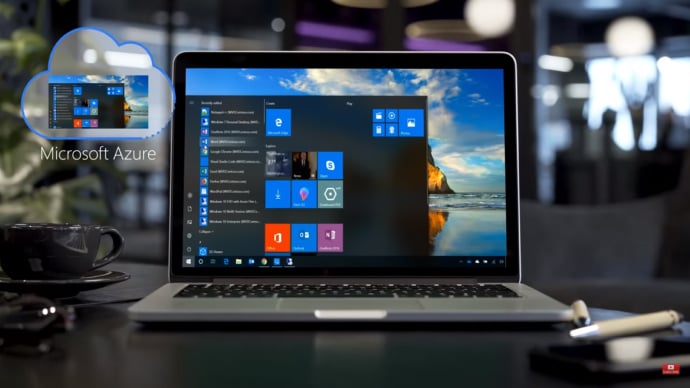



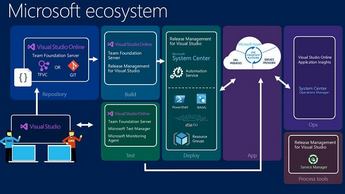










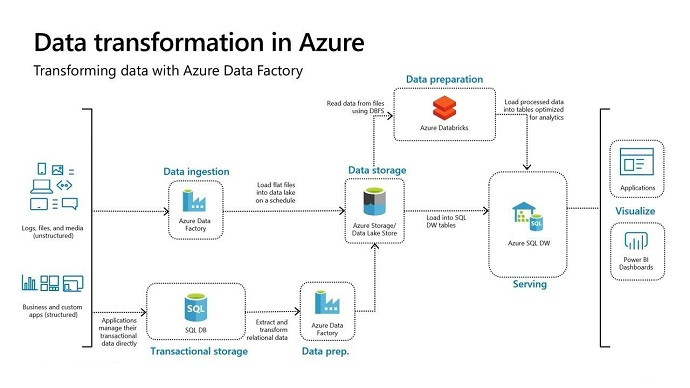









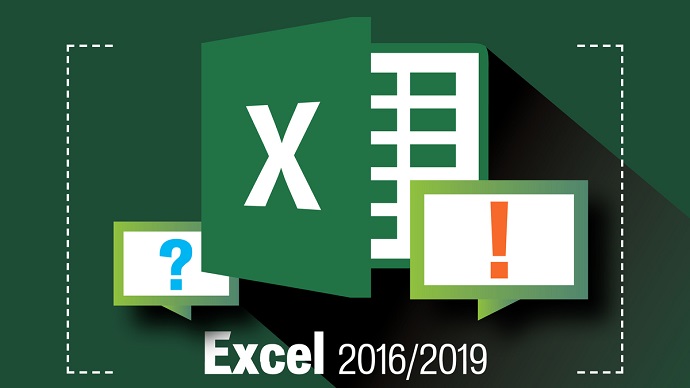





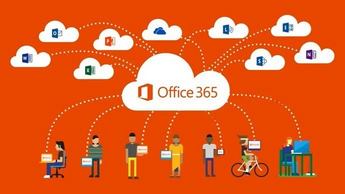
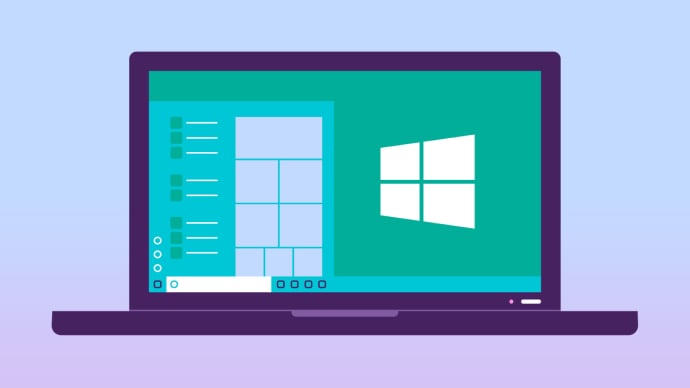









Only Registered Members can View Training Courses
Please fill out your email address below in order to view Training Courses. Registration is Free and Easy, You Simply need to provide an email address.
- Trusted by 1.2M IT Certification Candidates Every Month
- Hundreds Hours of Videos
- Instant download After Registration






